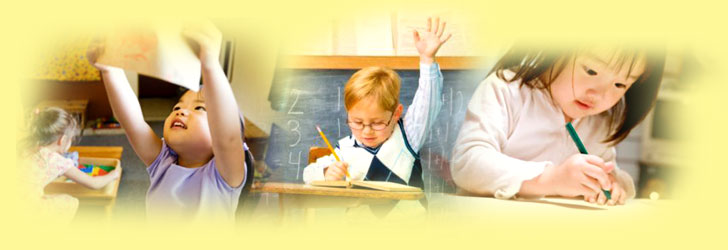










Introduction
- In recent years, areas such as school readiness and school transition have received considerable attention. Even the terminology is not consistently defined. Generally in Ontario professionals use the following to indicate what is meant by ‘school readiness’
- ‘Transition to school’ is the terminology used for programs that prepare children to a more formal setting. It usually includes 3 - 5 year olds and includes three different types of programs.
- Pre-school is a play-based setting that supports learning for 2 - 5 year olds. Pre-school programs can be formal or informal and are offered through a variety of public and private organizations. Pre-schools are not mandatory and may have fees associated with them.
- Junior Kindergarten (JK) is usually, but not always, offered in a school-based setting to support the beginnings of curriculum-based learning. Children are usually 3 or 4 years old at entry to JK and 4 or 5 years old by completion of a JK program. JK is publicly funded; but attendance is voluntary.
- Senior Kindergarten (SK) is offered in a school-based setting in all schools across Ontario as a publically funded 'transition to school' program for 4 and 5 year olds (at start of school-year). JK and SK are offered on a half-day or alternate full day basis.
- Some schools offer Full Day Kindergarten. The province of Ontario is set to expand the Full Day Kindergarten Program to all schools in Ontario.
- ‘School readiness’ is the terminology used to indicate that a child is ready to enter grade one. Children entering grade one are usually 5 or 6 years old in Ontario.

- In the report: With our Best Future in Mind: Implementing Early Learning in Ontario, Charles Pascal (2009a p5) sets the goals for every child in Ontario to enter the primary grades:
- “Healthy and secure
- Emotionally and socially competent
- Eager, confident and successful learners and
- Respectful of the diversity of their peers”.
A child’s ability to learn depends on how well she has mastered the art of self-regulation. Posner and Rothbart (2006) show that there is a sensitive period, when self-regulation can be enhanced, between the ages of three to five. During this time, the area of the brain that supports the development of self-regulation, experiences a major growth spurt. While self-regulation continues to develop into adulthood, having acquired age appropriate self-regulation by the time a child enters formal schooling, will benefit his learning trajectory. Following directions, staying on task, and managing emotions and social situations are the skills that will allow the child to focus on his academic activities. Self-regulation develops well in an environment that provides;
 Opportunities for playful learning by stimulating the child’s imagination and curiosity.
Opportunities for playful learning by stimulating the child’s imagination and curiosity.
 Caregivers that respond to the child's cues warmly, sensitively and consistently.
Caregivers that respond to the child's cues warmly, sensitively and consistently.
Children, experiencing circumstances that do not encourage healthy development and developmentally appropriate play, will greatly benefit from early interventions, before brain processes have become entrenched (Tierney & Nelson, 2009). The fundamental neural pathways for the development of self-regulation are more difficult to aquire after the age of six. The foundation, therefore, must be laid in the early years (Shonkoff & Philips, 2009).



